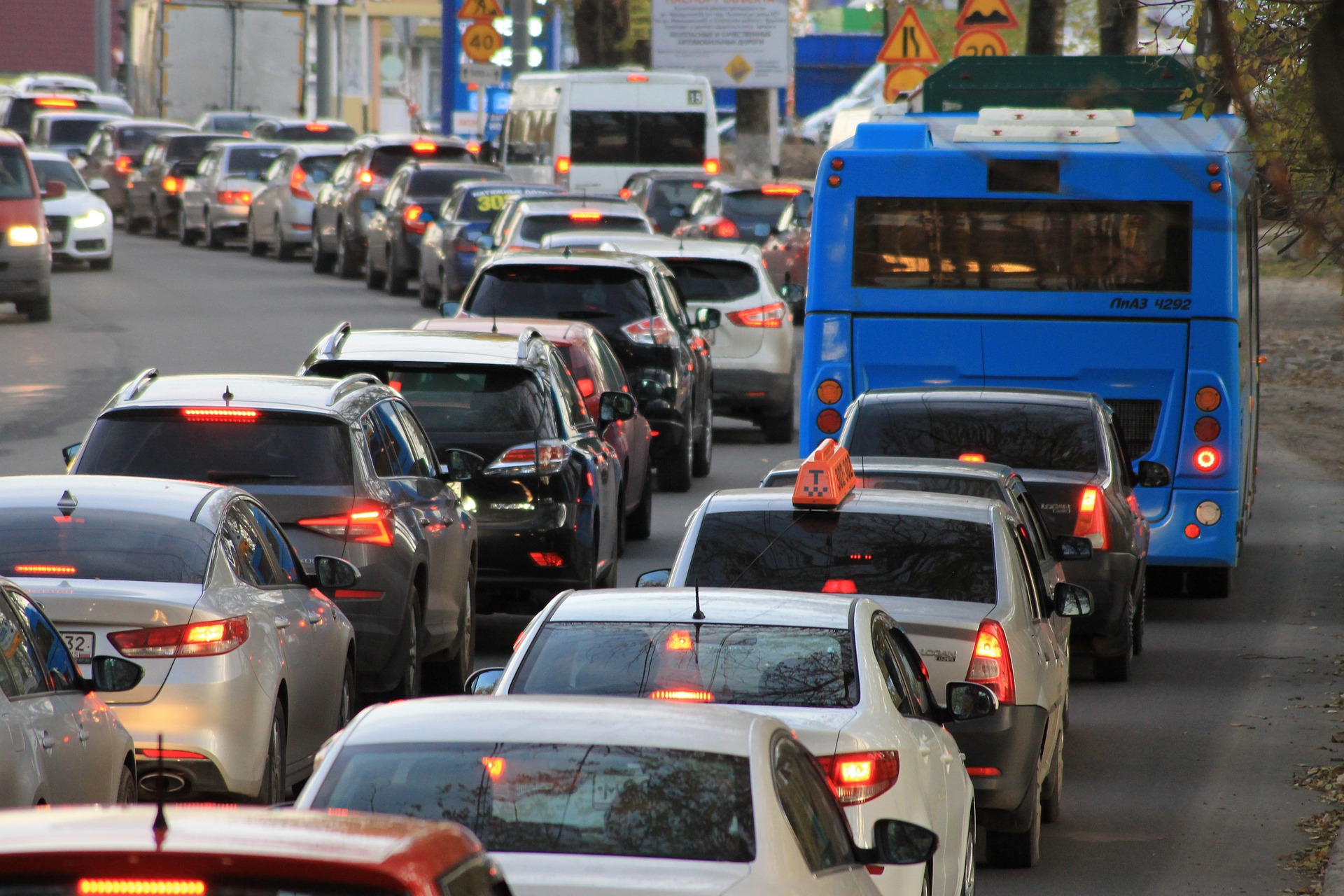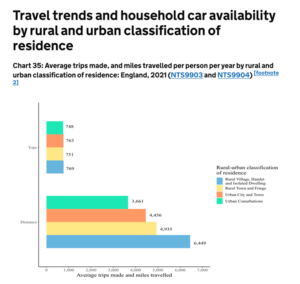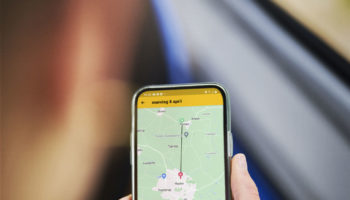Decarbonisation is a pressing concern, particularly in Gloucestershire, where local authorities have agreed to work together on a county-wide project to achieve net zero by 2045.
One of the biggest issues facing the county is that rural areas have, on average, much higher CO2 emissions per person than urban areas, particularly in transport. In this article, we look at the connection between car dependency and carbon dioxide emissions, and the options for reducing car trips.
Carbon and cars
Rural people, in general, own more cars and drive more often and longer distances than people in cities. Overall people living in rural areas will travel an average of 6,449 miles per year, compared to 3,661 miles by their urban counterparts, and will make 401 trips by car, compared to urban travellers’ 245. Rural people will conversely make far fewer trips by bus than their urban counterparts. This reliance on cars contributes to overall carbon footprints from transport which are much higher in rural areas than in cities – Gloucestershire is no exception. Whilst some areas of the city of Gloucester score better than the England average on car emissions per person, only a few locations in the surrounding area can claim to be better than average, with most of the area very much below average, and a significant chunk in the worst 10%. These tend to correlate with the most rural areas, with dispersed populations.
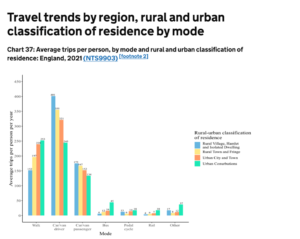
Back to bus?
The key to reducing car emissions lies in the provision of alternatives. Those areas with high car emissions correlate strongly with low density and infrequent public transport. Decades of increasing car use have eroded both the demand for and the provision of bus services, locking areas into car dependency and leaving people without cars with very few options. Whilst electric car sales are increasing, enabling some people to reduce their carbon footprint by replacing their vehicles, it’s not a solution for all. Public transport provides an equitable and inclusive path to low-carbon travel, for drivers and non-drivers alike.

It’s fair to say that this is a difficult time to be advocating the increase in the provision of public transport. Conditions have been very challenging across all areas of the UK, however, in particular, rural public transport has been pared back to reduce costs through reductions in the frequency of services and the reach of the network[1]. This further degrades the attractiveness of services, as it’s generally recognised that people only view the bus as a useful mode of transport where buses are frequent and the time penalty for using them over personal cars is small. In areas where this is not the case, the bus is used by those with no other option.
Reversing this trend to reduce car dependency however, requires better services and, in this context, the role of buses is being revisited.
Designing with DRT
Designing bus routes for rural areas can be tricky. The distances across rural areas are relatively long, and creating a frequent (at least hourly) service can require multiple buses to service each route. In addition, the mileage per bus per day can quickly add up, with buses often travelling over a hundred miles a day. On a commercial basis, the number of people living in – and therefore travelling between – smaller villages is unlikely to generate the numbers of fares and therefore the total sums to cover driver time and vehicle costs for these trips. Such services often fall to local authorities to fund, and the holders of the public purse strings need to understand how best to get value for public funds.
In these situations, to give people the option to travel, designing ‘on demand’ services can reach more people without the costs incurred by setting up fixed lines.
The DfT, through the Rural Development Fund has funded a number of DDRT – dynamic demand responsive transport – services to test the technology and evaluate the outcomes.
Two DDRT zones were launched in rural areas of Gloucestershire, one in the north of the Cotswold district (population density 78 people per km2) and one in the Forest of Dean (population density 165 persons per km2). In the areas covered by the new service, the Robin, it is as low as 28 persons per km2 in the Sandywell, Ermin and Cedworth MSOA, and as high as 994 persons per km2 in Coleford[2].
In the Forest of Dean, DDRT service reaches across the area, with virtual bus stops within the reach of over half of the total population of the Forest of Dean (87,107) within a 10-minute walk. Bus routes travel between the towns, on fixed lines with community transport operating some rural routes some days per week. To augment existing services, two mini-buses offer people the option to book trips ‘on demand’ – in reality, this means from two weeks to an hour before they travel. People have taken to using the DDRT service to make trips that are not covered by fixed-line buses, it enables people to make trips beyond those areas served and on days that services don’t run.
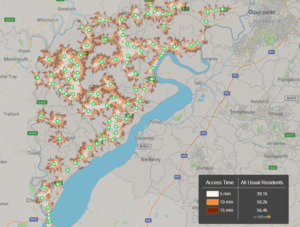
In north Cotswolds, where the population is smaller – just 18,909 people – and even less dense, fixed routes make very little sense. However, the DDRT stops cover a similar proportion of the population, again with over 50% of people living within a 10 minute walk of a virtual bus stop.
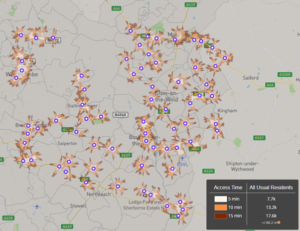
Providing people with buses is not a short-term solution. Changing behaviour takes time – car dependency took several generations to reach this point, and rolling it back is unlikely to be immediate.
The first step is to provide an alternative that will enable people to travel when they need to, and DRT enables such a service to be put in place.
[1] https://bettertransport.org.uk/wp-content/uploads/legacy-files/research-files/buses-in-crisis-2015.pdf
[2] https://inform.gloucestershire.gov.uk/media/2108954/mid-2020-population-estimates-final.pdf and https://www.ons.gov.uk/census/maps/choropleth/population/population-density/population-density/persons-per-square-kilometre?lad=E07000078
You might also like this article: WeCommute, powered by Padam Mobility, to offer smart commuting solutions

